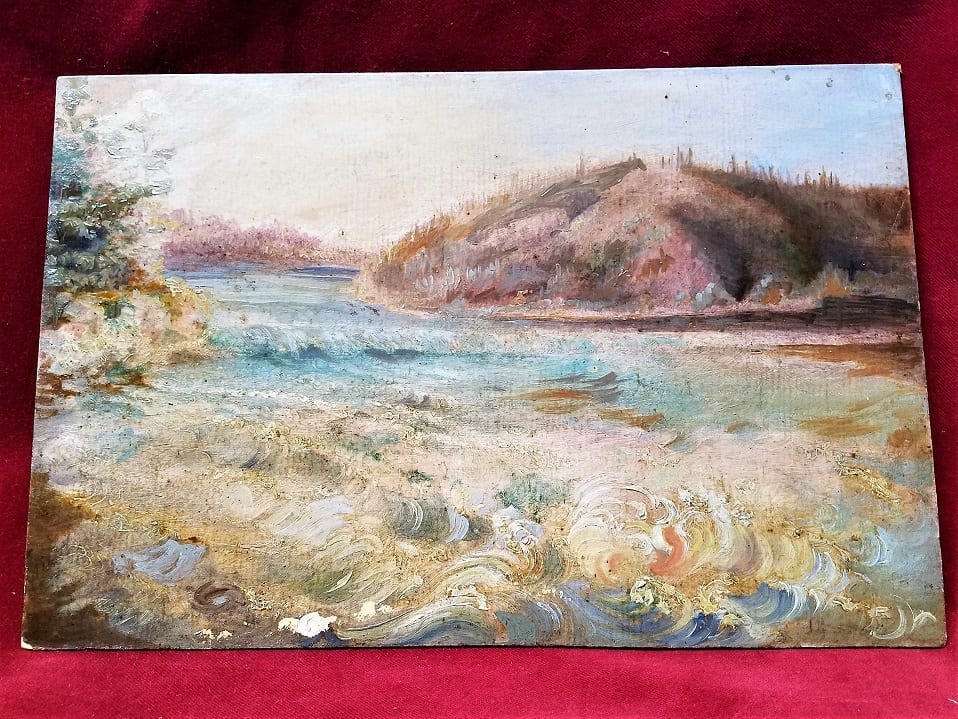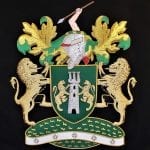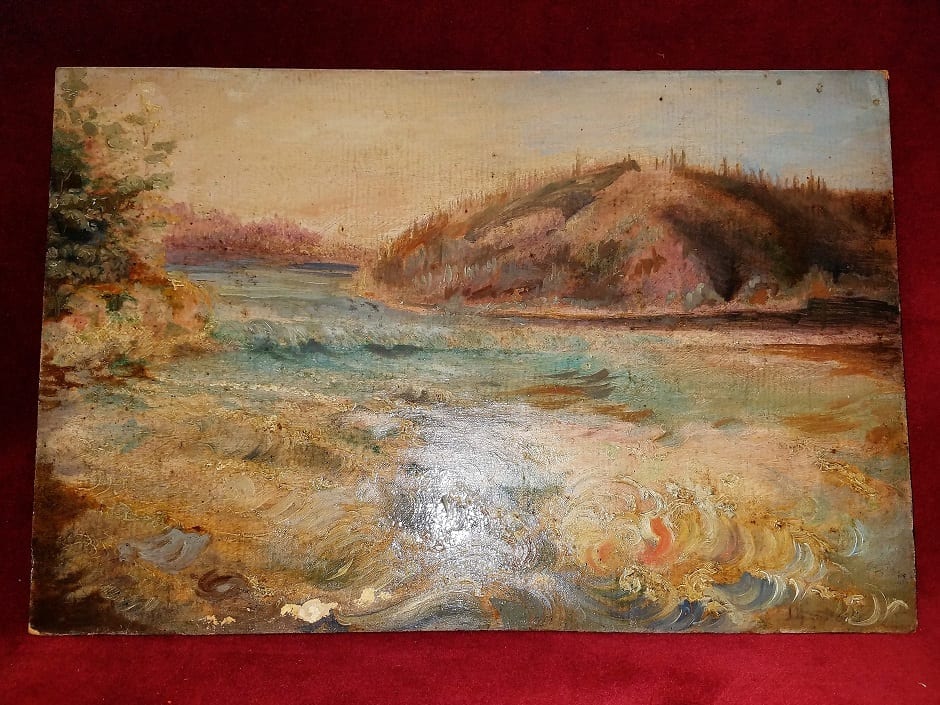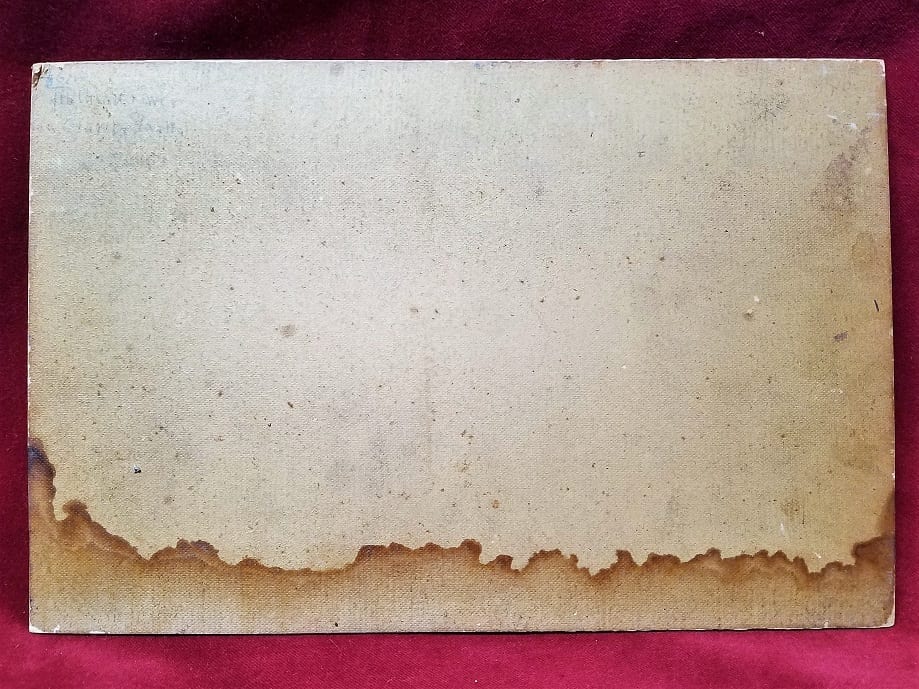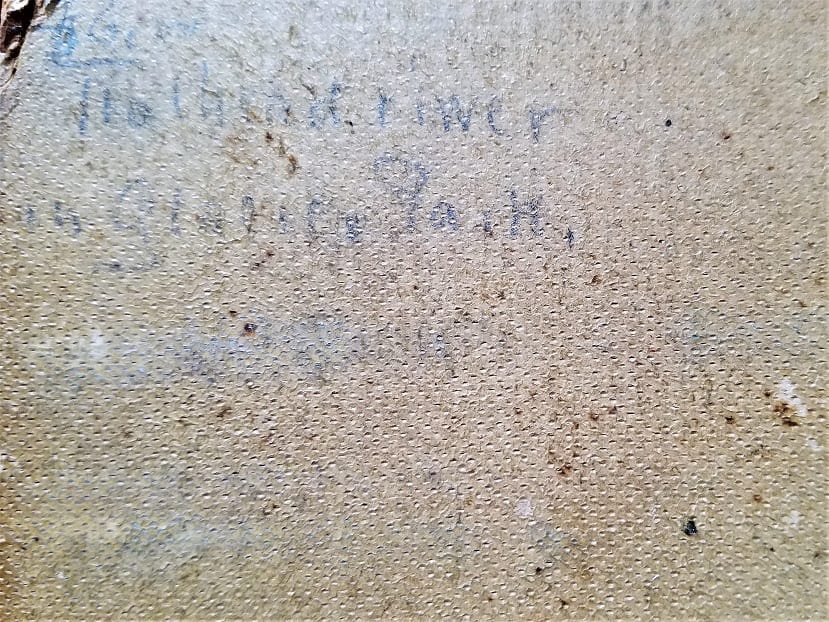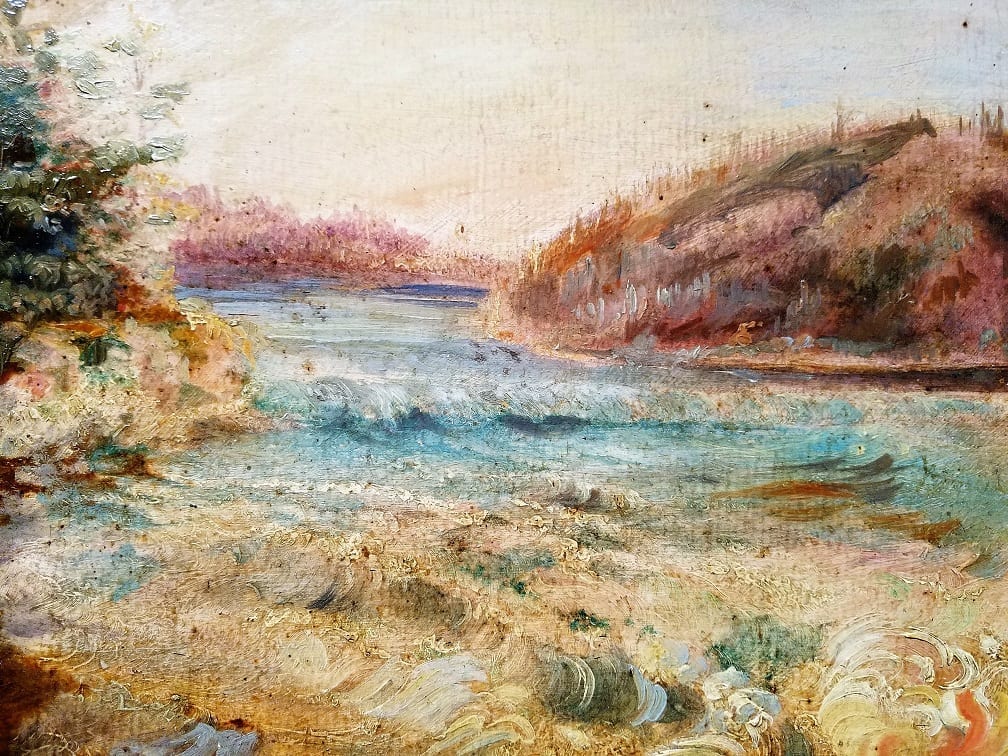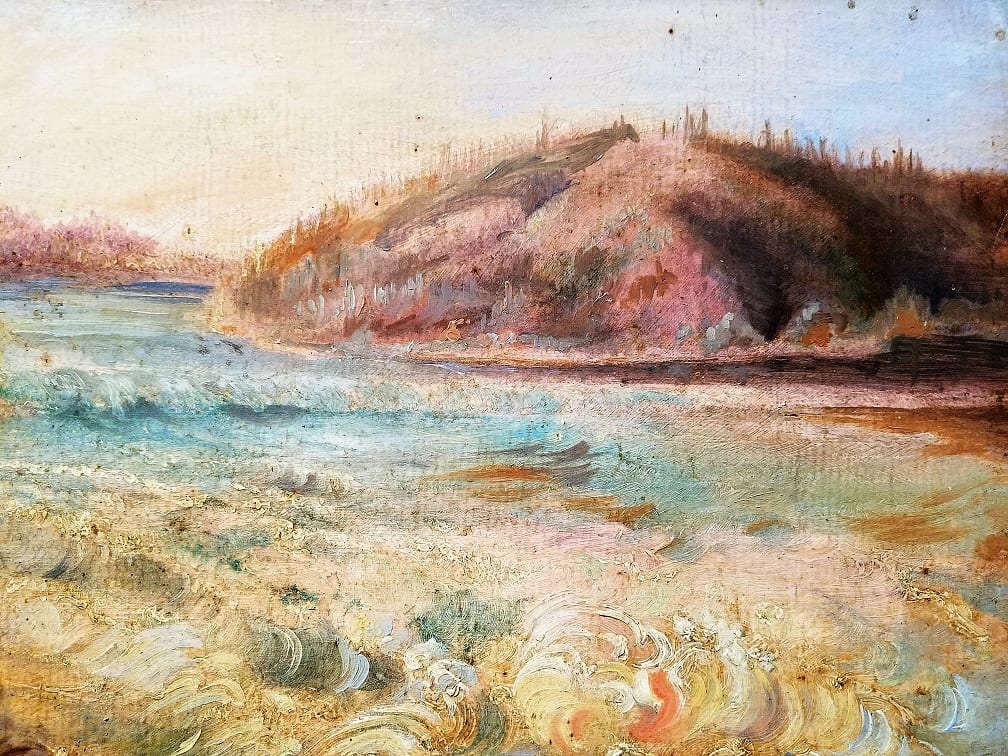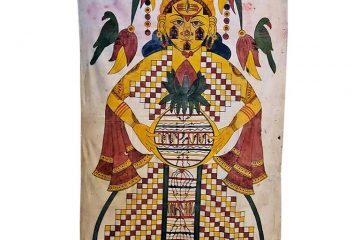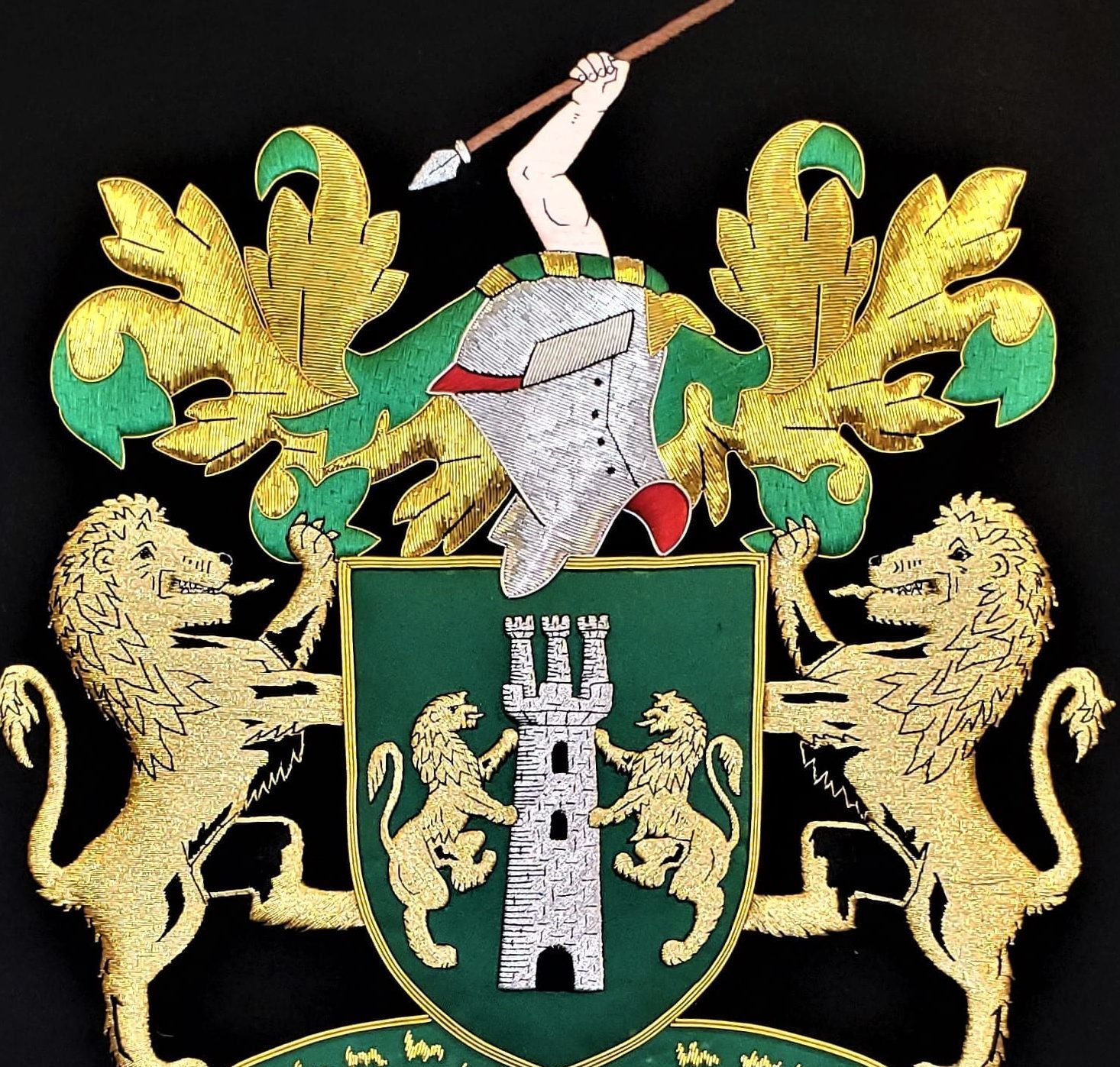Early 20C Oil on Board of River in Glacier National Park Montana by Thorvald Strom.
PRESENTING a nice Early 20C Oil on Board of River in Glacier National Park Montana by Thorvald Strom.
Painted by Thorvald Strom.
Thorvald Strom was a Danish artist, sculptor and furniture maker originally from Denmark but who emigrated to Harrison Hot Springs in British Columbia at the turn of the 20th Century.
He had a studio in Harrison Hot Springs and continued to produce unique and one of a kind pieces up until the 1950’s.
We have framed photos of both he and his family outside the Studio in the 1940’s/50’s.
He became very prominent and his pieces are VERY HIGHLY regarded and treasured in B.C. and Montana.
This unframed oil on board is of a river scene in Glacier National Park in Montana.
It depicts the glacier with mountains and a river.
Painted in or around 1910-15….it is unsigned but MOST DEFINITELY by Thorvald Strom.
It is hand written on the frame that it is a painting of Glacier National Park…..in T. Strom’s hand.
HIGHLY COLLECTIBLE and DECORATIVE PIECES…..UNIQUE!!
The Village of Harrison Hot Springs is a small community at the southern end of Harrison Lake in the Fraser Valley of British Columbia. It is a member of the Fraser Valley Regional District; its immediate neighbour is the District of Kent and included in it, the town of Agassiz. It is a resort community known for its hot springs, and has a population of just over 1500 people. It is named after Benjamin Harrison, a former deputy governor for the Hudson’s Bay Company.
The Village of Harrison Hot Springs has been a small resort community since 1886, when the opening of the Canadian Pacific Railway brought the lakeside springs within a short carriage ride of the transcontinental mainline. In its first promotion as a resort it was known as St. Alice’s Well, although it had been discovered decades earlier when a party of goldfield-bound travellers on Harrison Lake capsized into what they thought was their doom, only to discover the lake at that spot was not freezing, but warm.
Although the resort flourished in a low-key fashion for years after this discovery was exploited by hoteliers, the Village of Harrison Hot Springs was not incorporated until 1949. Its namesake hot springs are a major attraction for tourists who come to stay at the village’s spa-resort.
The hot springs themselves were originally used and revered by the Sts’Ailes (Chehalis) First Nations people who live along the Harrison River nearby. There are two hot springs, the “Potash”, with a temperature of 40 °C, and the “Sulphur”, with a temperature of 65 °C. According to Harrison Hot Springs Resort, the waters average 1300 ppm of dissolved mineral solids, one of the highest concentrations of any mineral spring. This hot spring is one of several lining the valley of the Lillooet River and Harrison Lake. The northernmost of the Lillooet River hot springs is at Meager Creek, north of Whistler, with another well-known one to the east of Whistler at Skookumchuck Hot Springs, midway between Pemberton and Port Douglas. One feature of this chain of hot springs is that the Harrison Hot Springs vent is the most sulfuric, and there is consistently less sulfur content as one goes northwards, with the springs at Meager Creek having almost no scent at all.
Link: https://en.wikipedia.org/wiki/Harrison_Hot_Springs
Glacier National Park is a national park located in the U.S. state of Montana, on the Canada–United States border with the Canadian provinces of Alberta and British Columbia. The park encompasses over 1 million acres (4,000 km2) and includes parts of two mountain ranges (sub-ranges of the Rocky Mountains), over 130 named lakes, more than 1,000 different species of plants, and hundreds of species of animals. This vast pristine ecosystem is the centerpiece of what has been referred to as the “Crown of the Continent Ecosystem”, a region of protected land encompassing 16,000 square miles (41,000 km2).[3] The current Superintendent is Jeff Mow.[4]
The region that became Glacier National Park was first inhabited by Native Americans. Upon the arrival of European explorers, it was dominated by the Blackfeet in the east and the Flathead in the western regions. Under pressure, the Blackfeet ceded the mountainous parts of their treaty lands in 1895 to the federal government; it later became part of the park. Soon after the establishment of the park on May 11, 1910, a number of hotels and chalets were constructed by the Great Northern Railway. These historic hotels and chalets are listed as National Historic Landmarks and a total of 350 locations are on the National Register of Historic Places. By 1932 work was completed on the Going-to-the-Sun Road, later designated a National Historic Civil Engineering Landmark, which provided greater accessibility for automobiles into the heart of the park.
The mountains of Glacier National Park began forming 170 million years ago when ancient rocks were forced eastward up and over much younger rock strata. Known as the Lewis Overthrust, these sedimentary rocks are considered to have some of the finest examples of early life fossils on Earth. The current shapes of the Lewis and Livingston mountain ranges and positioning and size of the lakes show the telltale evidence of massive glacial action, which carved U-shaped valleys and left behind moraines which impounded water, creating lakes. Of the estimated 150 glaciers which existed in the park in the mid-19th century, only 25 active glaciers remained by 2010.[5] Scientists studying the glaciers in the park have estimated that all the glaciers may disappear by 2030 if current climate patterns persist.[6]
Glacier National Park has almost all its original native plant and animal species. Large mammals such as Grizzly bears, moose, and mountain goats, as well as rare or endangered species like wolverines and Canadian lynxes, inhabit the park. Hundreds of species of birds, more than a dozen fish species, and a few reptile and amphibian species have been documented. The park has numerous ecosystems ranging from prairie to tundra. Notably, the easternmost forests of western redcedar and hemlock grow in the southwest portion of the park. Large forest fires are uncommon in the park. However, in 2003 over 13% of the park burned.[7]
Glacier National Park borders Waterton Lakes National Park in Canada—the two parks are known as the Waterton-Glacier International Peace Park and were designated as the world’s first International Peace Park in 1932. Both parks were designated by the United Nations as Biosphere Reserves in 1976, and in 1995 as World Heritage sites.[8][9] In April 2017, the joint Park received a fourth designation with “provisional Gold Tier designation as Waterton-Glacier International Dark Sky Park through the International Dark Sky Association“[10], the first transboundary dark sky park.
Link: https://en.wikipedia.org/wiki/Glacier_National_Park_(U.S.)
Early 20C Oil on Board of River in Glacier National Park Montana by Thorvald Strom.
Provenance: From a Private Dallas Collection.
Dimensions: 12.5″ x 8.25″
Condition: Pretty good for its age. Some minor losses and could do with a professional cleaning.
